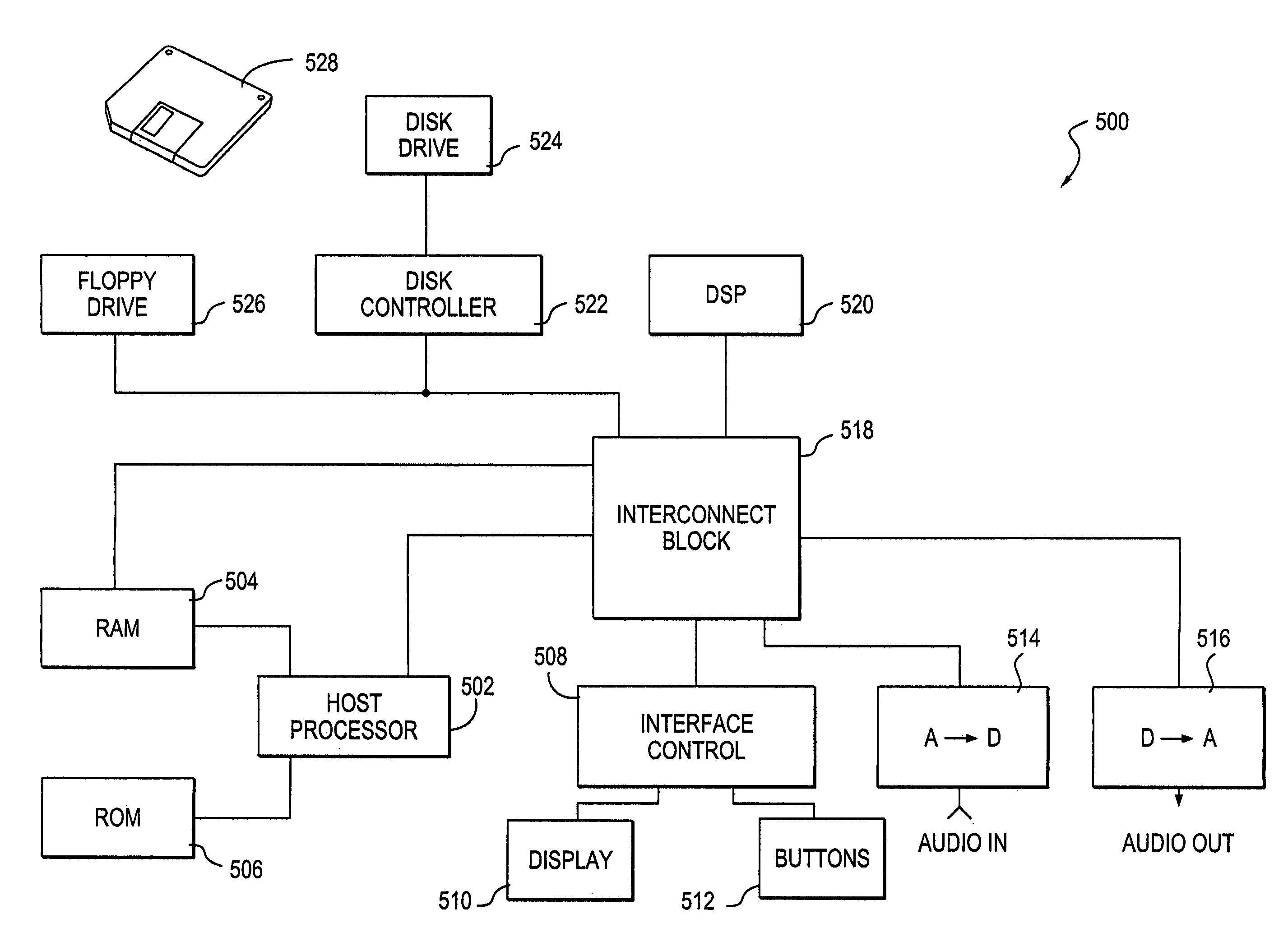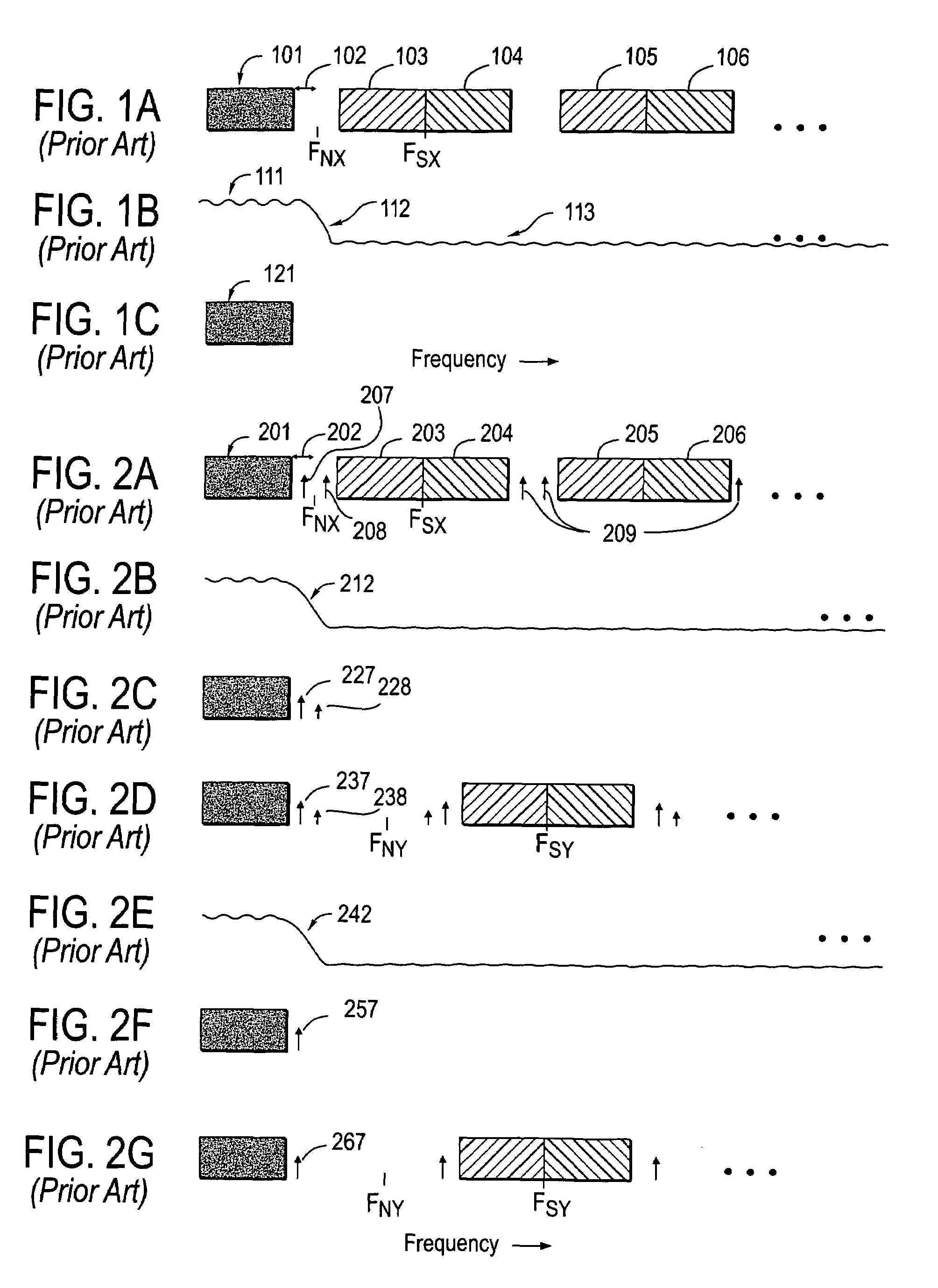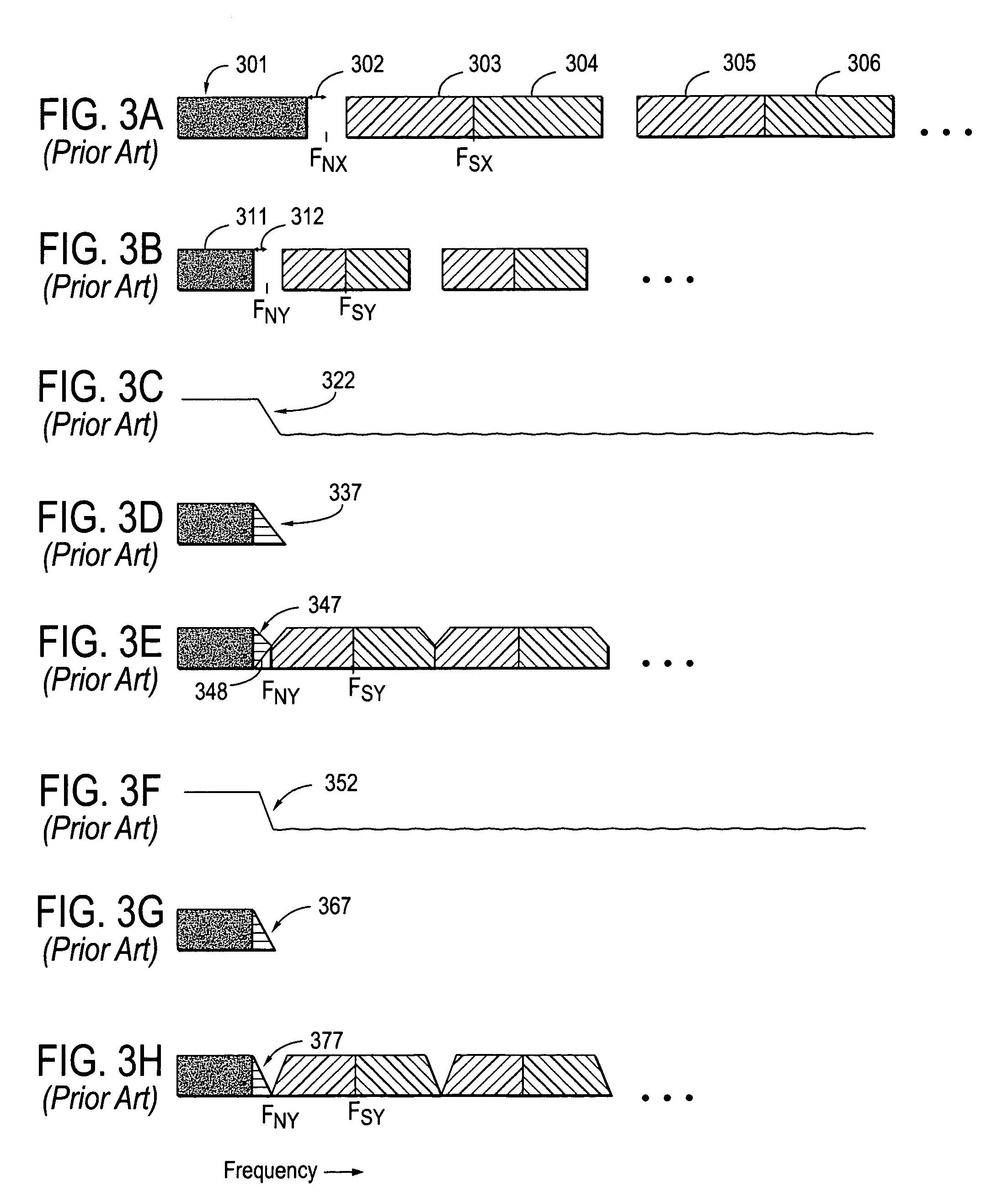Sample rate converter having distributed filtering
a sample rate converter and filtering technology, applied in the field of sample rate converters with distributed filtering, can solve the problems of increasing the computational complexity of the above sample rate conversion techniques, increasing the computational intensity of the converter, and the generation of aliases, so as to avoid the aforementioned artifacts, reduce computational requirements, and minimize unwanted artifacts
- Summary
- Abstract
- Description
- Claims
- Application Information
AI Technical Summary
Benefits of technology
Problems solved by technology
Method used
Image
Examples
first embodiment
Halfband Filter in Upsampler when Output Sample Rate Approx. Equal to or Higher than Input Sample Rate
[0072]The parameters of the upsampling filter and of the interpolator for this case when the output signal has approximately the same or wider passband than the input signal (which is generally the case when the output sample rate is approximately equal to or higher than the input rate) are illustrated in FIGS. 7A-7E. FIG. 7A shows the spectrum of the signal Xn, including passband frequency range 701, guardband 702, first image 703, second image 704, and third image 705. Images above the third are not shown.
[0073]The desired parameters for half-band upsampling filter 602 are shown in FIG. 7B. These include passband ripple 711, transition band 712 of width less than or equal to twice the guardband whose lower end 717 must be no lower than the upper edge of input signal passband 701, and whose upper end 718 must be below the lower edge of the first passband image 703, and stopband 713...
second embodiment
Halfband Filter Instead of Upsampling when Input Sample Rate is Approximately Twice Output Sample Rate
[0086]Referring to FIGS. 5 and 11, in another embodiment of the present invention, information stored in ROM 506 defines a sample rate converter 1100 that converts an incoming stream of data samples x1n, representing an input signal, at a first sample rate to a second, lower, sample rate y1m. As before, oversampling can again serve to reduce the computational complexity of converter 1100. For example, when the input sample rate is nominally (but not necessarily exactly) twice the output sample rate, a half-band (but not upsampling) filter may be employed with an interpolator. Rather than oversampling the input signal x1n by a factor of two, as discussed above, the samples representing the input signal x1n are simply filtered. Either FIR or IIR filters may be employed, and the same coefficients derived previously can be used. To that end, the converter 1100 includes a half-band filte...
third embodiment
Interpolator Followed by Halfband Decimating Filter for Output Sample Rate Less than or Approximately Equal to, but More than Half, the Input Sample Rate
[0094]Referring to FIGS. 5 and 13, were the output sample rate less than or approximately equal to the input sample rate, but well above half of the same, then it would be preferred to have a sample rate converter 1300 with an interpolator 1304 producing an intermediate signal at exactly twice the output sample rate. The interpolator 1304 is followed by a half-band decimating filter 1306 having a sharp cutoff. In this manner, the interpolator 1304 need only reduce aliasing above the bottom of the fourth image of the passband at the output sample rate, because the half-band decimating filter 1306 effectively eliminates everything below this image. In other words, the transition band of interpolator 1304 can extend from the edge of the passband of the (lower rate) output signal through the first image of the passband edge of the input...
PUM
 Login to View More
Login to View More Abstract
Description
Claims
Application Information
 Login to View More
Login to View More - R&D
- Intellectual Property
- Life Sciences
- Materials
- Tech Scout
- Unparalleled Data Quality
- Higher Quality Content
- 60% Fewer Hallucinations
Browse by: Latest US Patents, China's latest patents, Technical Efficacy Thesaurus, Application Domain, Technology Topic, Popular Technical Reports.
© 2025 PatSnap. All rights reserved.Legal|Privacy policy|Modern Slavery Act Transparency Statement|Sitemap|About US| Contact US: help@patsnap.com



